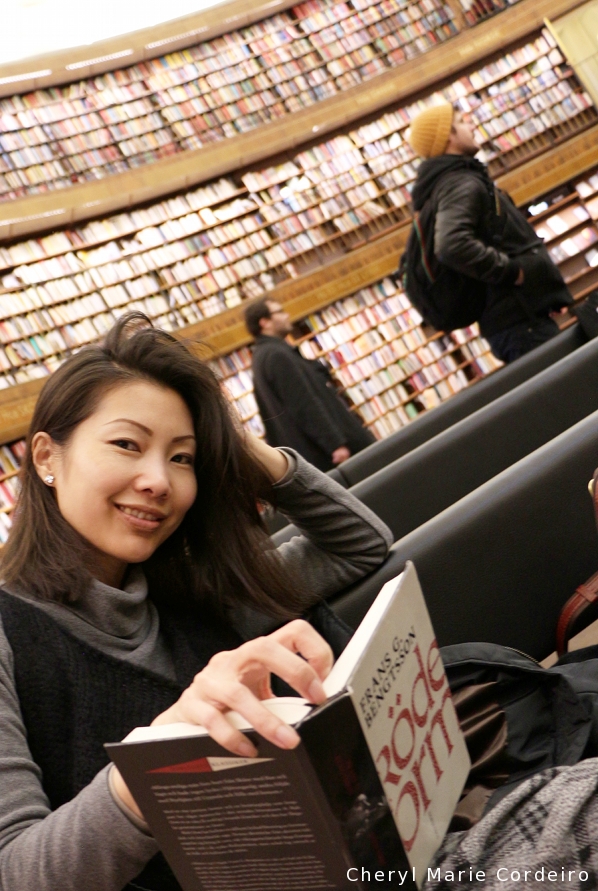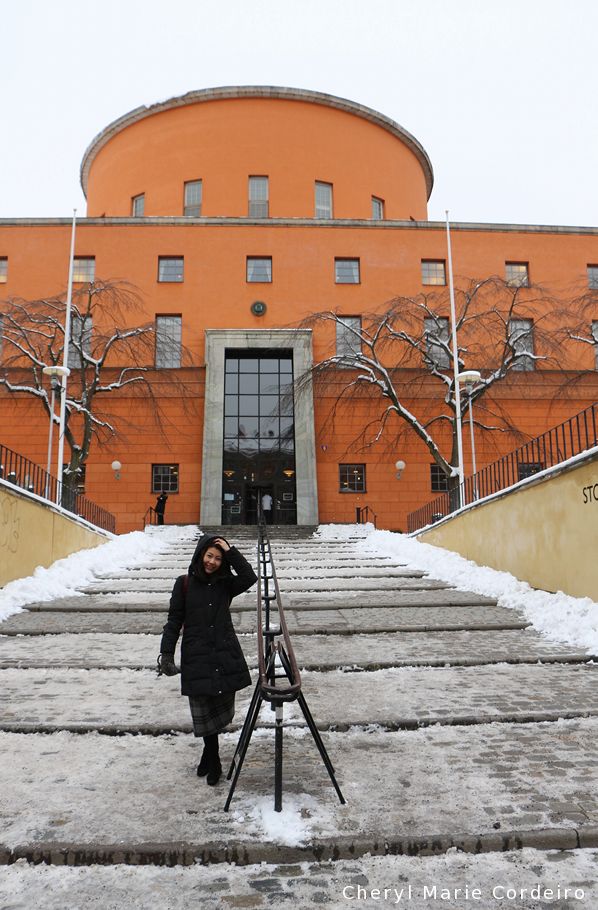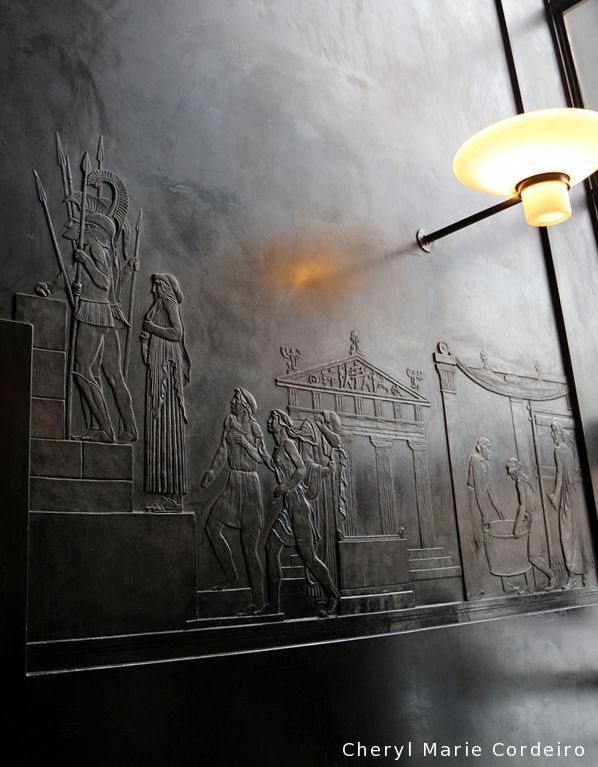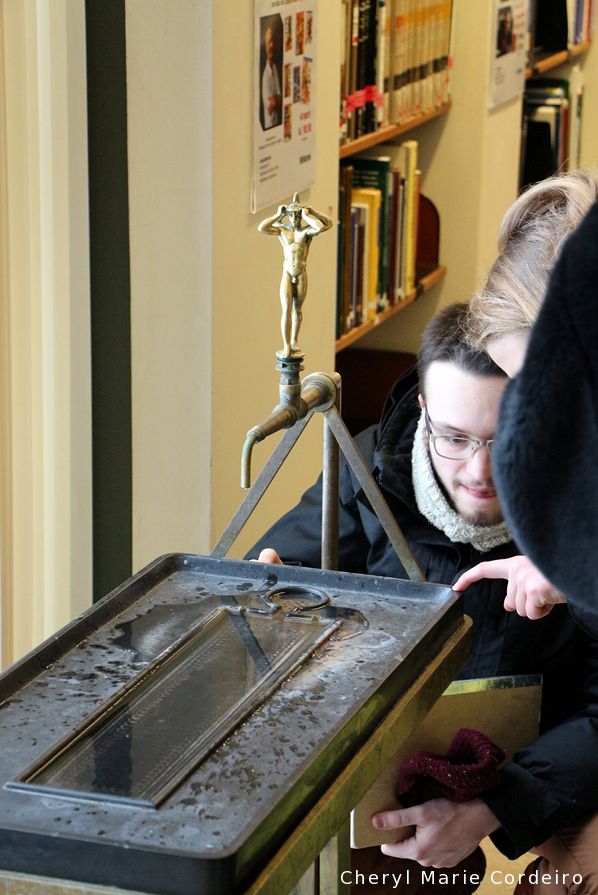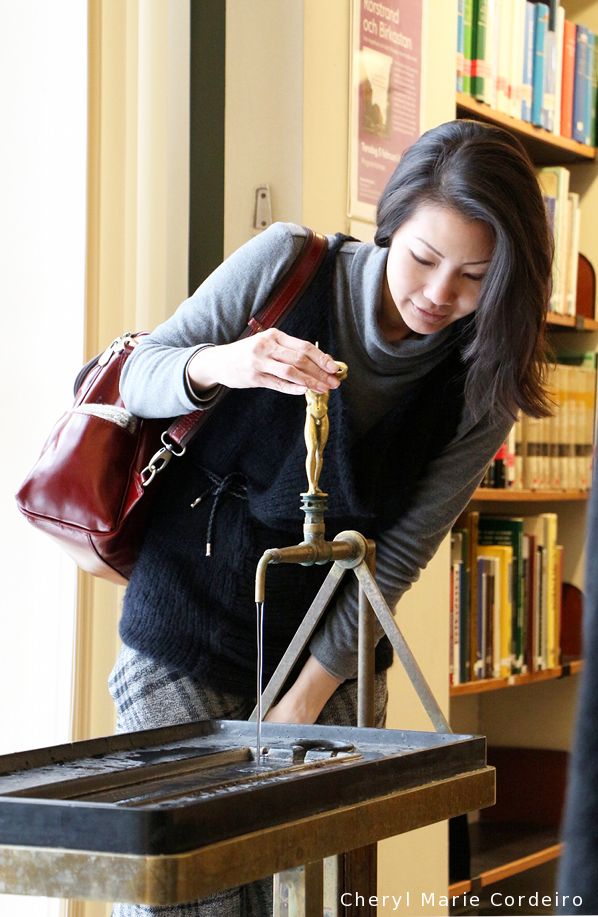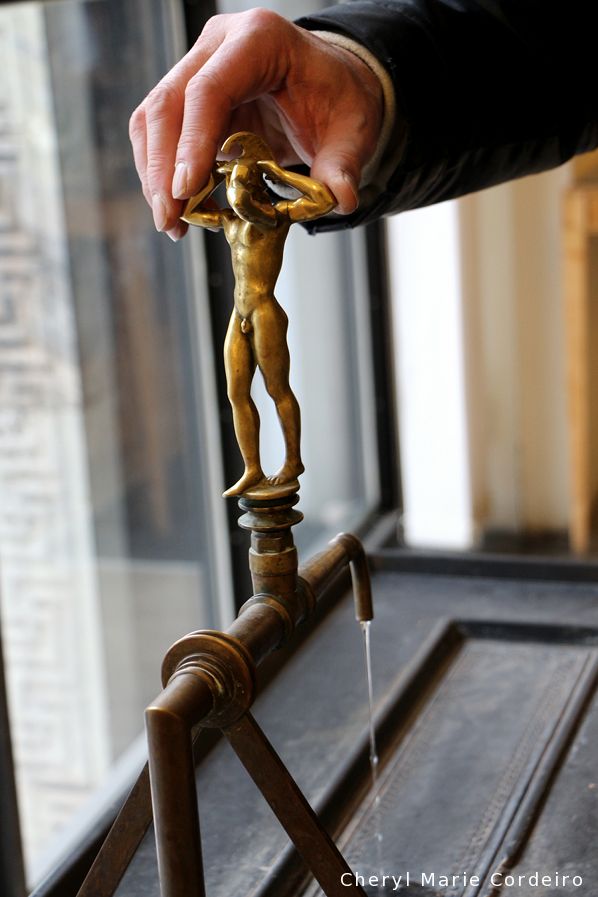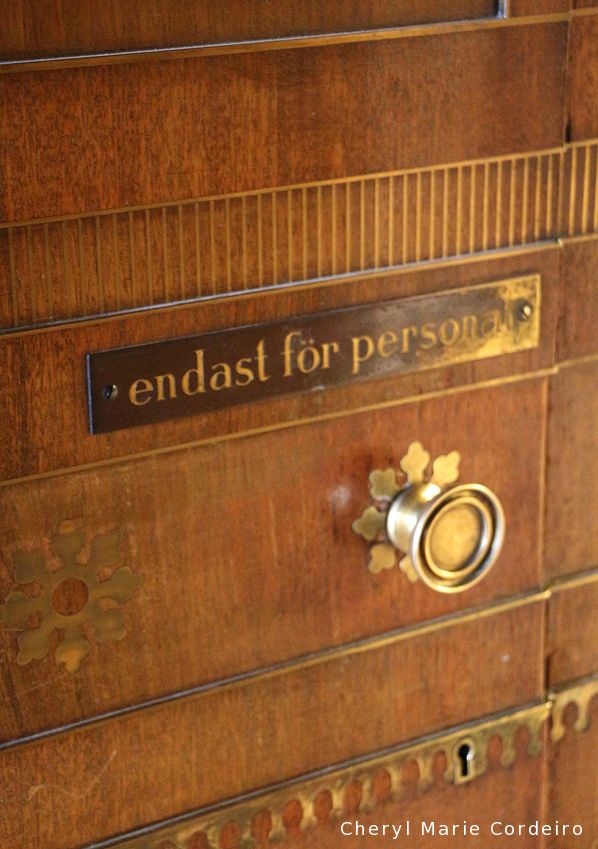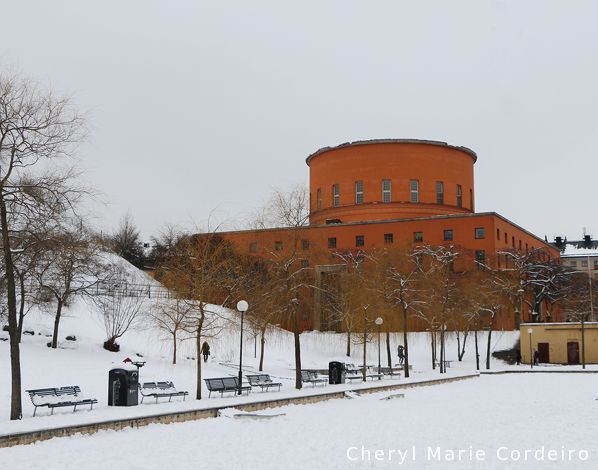At the rotunda of the Stockholm Public Library, Sweden
Text & Photo © JE Nilsson, CM Cordeiro, Sweden 2015
The advancements made in the field of information communication technologies (ICTs) in the past few decades that has redefined our relationship towards information, has in the same process redefined the status and role of the city library in our midst. With all things quick and digital, why even bother visiting a concrete building that houses dusty shelves of well worn books?
I had the opportunity to visit the visually striking Stockholm Public Library. With its tall bordered entrance modeled after the entrance of an Egyptian tomb that promises (and delivers) the fiery treasures of knowledge as you ascend the stairs to Enlightenment, the architecture of the building, designed by Erik Gunnar Asplund, contains in itself ideas and symbolisms from various cultures spanning the globe. From the outside, the circle and square represent heaven (perfect unity) and earth (ruled by laws and regulations) in Chinese symbolism. The interior of Asplund’s rotunda might also call to mind to some, the Pantheon in Rome.
Sitting in the middle of the cylindrical hall, you’re greeted in sight with hundreds of books, bound and neatly slotted under various categories. What is immediately noticed is how the books span not just innumerable subjects, but innumerable languages, all side by side in shelves adjacent to each other. If all else had left the library and there was not a single soul in sight, the hall would still not be quiet, for the low murmurs that emanate from the books. Voices of authors through the centuries who would like to spend time with you in exchange of ideas, if you would only allow them the chance by picking up their bound work, thus opening a dialogue with them.
In the time that I spent reading some of Frans G. Bengtsson’s Röde Orm (1941), I noted too how there were many more visitors to the library who came not to read or borrow any book, but to photograph the place. While the architectural achievement of Asplund is not to be diminished, there comes a daunting realisation – more so today, in the age of the third wave of industrialization enabled by digital technology, what is accessible at the tip of your fingers is still nonetheless something not to be taken for granted. There are books within the walls of this public library that tell about societies and cultures who do not share the same view on free access to knowledge, and of groups of people who might never come to know the existence of any country outside their own, or of any place whose main purpose is to house centuries of collected wisdom. The existence of a place such as this public amenity brings into awareness, the asymmetries of global social structures, highlighting in a way, the haves and the have-nots.
For the moment, such public libraries are what civil societies have as luxury and as epitome of a quality of life. This public library, whose gates for the moment are unguarded, is an embodiment and illustration of access to open dialogue and free exchange of polite discourse without the need to impose any one’s will on another. Authors from past till present converse with each other, converse with readers, who in turn converse with other readers.
Where once it was predicted that books in print would become irrelevant and be replaced by digital reading, I can see here how the opposite might be true, and even desired. With current global discourse on humanity’s right to education, equal access to information and information technology, for the societies that have no such repositories of treasure, the halls of this public library and all other public libraries stand as testament to a type of society that humanity should aspire towards.
And for the societies that do have such repositories of treasure, the halls and books remain a constant reminder that it is a luxury (of time, of peace, of civil society in open discourse) that should not be taken for granted.
I could see how one could spend a lifetime here in quiet reading and in personal contemplation. To spend a few hours everyday between the covers of well worn books, absorbing the various ideas of authors from different parts of world not necessarily in agreement but in acknowledgement, celebration even, of the diversity of thoughts and practices, is a luxury worth pursuing.
Designed as the entrance to an Egyptian tomb, the fiery glow of the hall promises (and delivers) the golden treasure of Knowledge. Through architectural design, visitors are made to feel as if ascending into Enlightenment. This is a place where you could literally spend a lifetime just reading, being in dialogue with authors who would love to spend time with you.
Asplund’s rotunda interiors call to mind the Pantheon in Rome.
Stationed at various halls, sources of water.
Many symbolisms come to mind with these beautifully crafted bronze taps reminiscent of the Renaissance sculptures of Michelangelo. One of which is the view that Knowledge should be allowed to flow as freely as water from its source of spring, collected in a basin (in a bath), in its fluidity, in access to the public.
What once was tedious and cumbersome, could today well be a treasure of its own today – handwritten and sorted Index Cards.
Well worn handles and signs that indicate entrances for the library’s esoteric circle.
The Stockholm Public Library,a treasure vault of Knowledge in simultaneous dialogue.
